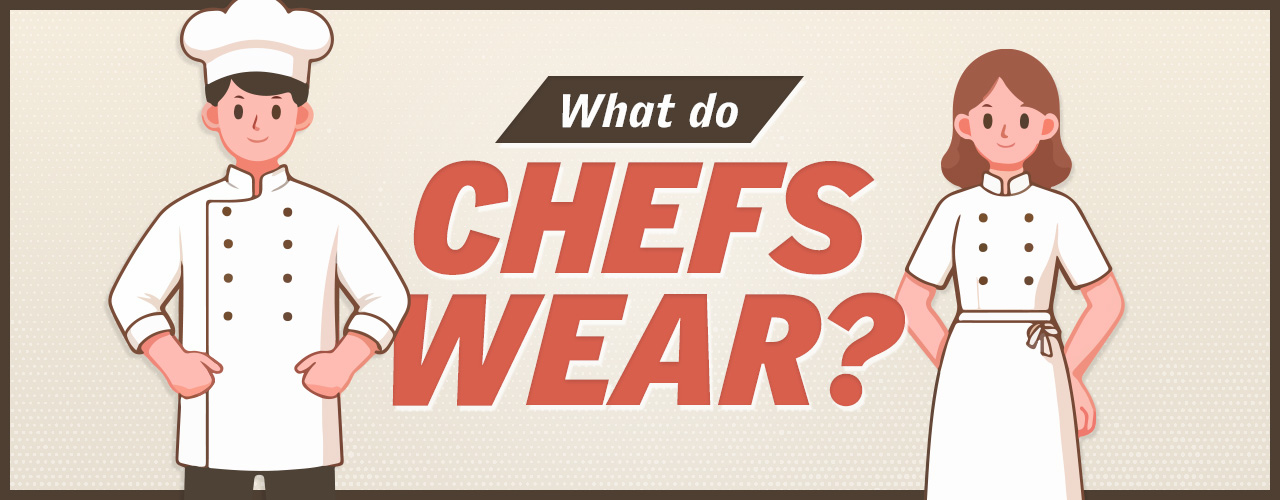
Have you ever wondered why chefs wear crisp white jackets and tall hats? There's actually a lot more to a chef's uniform than just style. Each element serves a specific purpose, from head to toe. From maintaining a clean and hygienic work environment to protecting chefs from burns and spills, a proper uniform is meant to help chefs focus on their culinary tasks without distractions. We'll explain the meaning behind each part of a chef's uniform so you can create an effective dress code policy that benefits your kitchen staff.
Shop Chef Uniforms1. Chef's Hat (Toque)
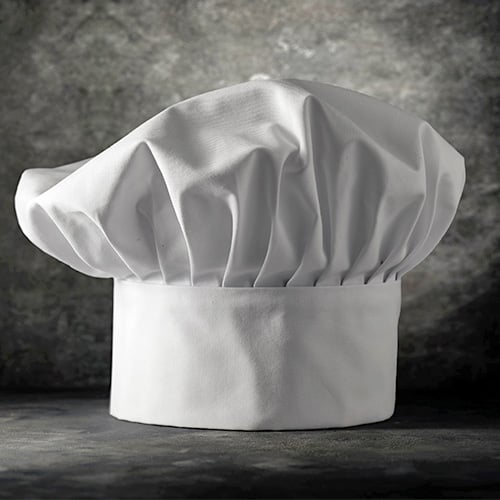
Chefs have a distinctive piece of attire that sets them apart – the iconic chef's hat, also known as a toque. These tall, pleated hats serve a practical purpose beyond just making chefs look professional and distinguished. Traditionally, each pleat in the toque represented the number of skills a chef had mastered. In modern kitchens, the pleats are more of an aesthetic feature rather than a reflection of a chef's skills.
The height of the chef's hat was originally meant to signify station and rank in the kitchen. In traditional brigade de cuisine systems, the tallest hat was worn by the most experienced and skilled chef, such as the head chef or executive chef. This hierarchy was visually represented by the varying heights of the hats worn by different types of chefs in the kitchen.
Here are some more reasons why chefs wear a toque:
- Hygiene: By securely covering the chef's head, the hat prevents any stray hairs from falling into the food being prepared. This not only ensures that the dishes served are free from any contaminants but also presents a professional appearance to customers.
- Temperature Regulation: Kitchens can be hot and hectic environments, especially during peak service times. The tall structure of the hat creates a barrier between the chef's head and the heat of the kitchen, helping to keep them cool and comfortable.
2. Neckerchief
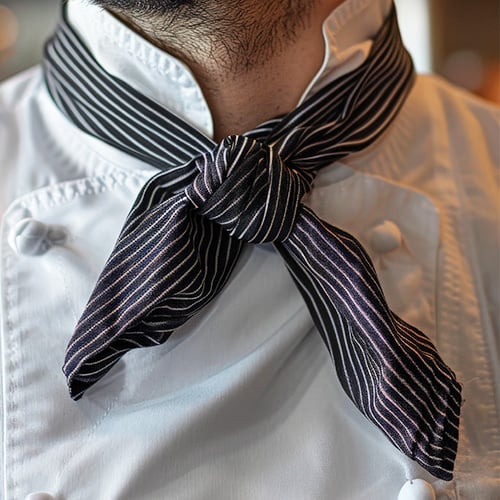
The chef's neckerchief is a traditional symbol of professionalism and expertise in the culinary industry. It signifies a chef's commitment to their craft and adds a touch of elegance to their appearance. In a fast-paced kitchen environment where appearances matter, the neckerchief helps chefs maintain a polished and put-together look throughout their long shifts.
But the neckerchief is not just a fashion statement - it also serves a practical purpose. Chefs often work in hot and steamy conditions, constantly exposed to heat and splattering food. The neckerchief acts as a barrier, protecting the chef's neck from burns and spills. It also absorbs sweat, keeping chefs cool and comfortable as they work tirelessly to create delicious dishes.
3. Chef's Coat
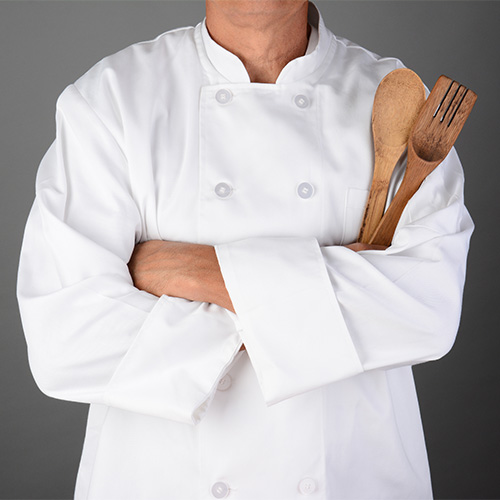
Another iconic piece of a chef's attire is the classic chef's coat, also known as a chef's jacket. It serves a practical purpose in the kitchen, designed to protect the chef from spills, splatters, and burns while working in a fast-paced and often chaotic environment. Usually made from cotton or poly-cotton blends, these coats are constructed to be durable and breathable so chefs can stay comfortable when working near hot equipment.
One distinguishing feature of a chef's coat that often stands out is the double-breasted design. The term "double-breasted" refers to a garment with an overlapping front flap fastened with two rows of buttons. In the case of a chef's coat, this design allows chefs to easily reverse the front flap if one side becomes soiled, giving them a fresh, clean appearance without having to change into a completely new coat. This feature is especially useful in busy kitchens where time is of the essence.
Check out some other distinguishing features of a chef's coat:
- Cuffed Sleeves: These aren't just for style - they serve a practical purpose in a bustling kitchen. The cuffs help to keep sleeves out of the way while cooking, reducing the risk of accidental spills or burns.
- Pockets: Some chef coats feature a pocket on the upper sleeve. This handy compartment is perfect for storing essential tools of the trade, such as kitchen thermometers, pens, or small notebooks. With easy access to these items right on their person, chefs can work efficiently and keep everything they need close at hand.
4. Apron
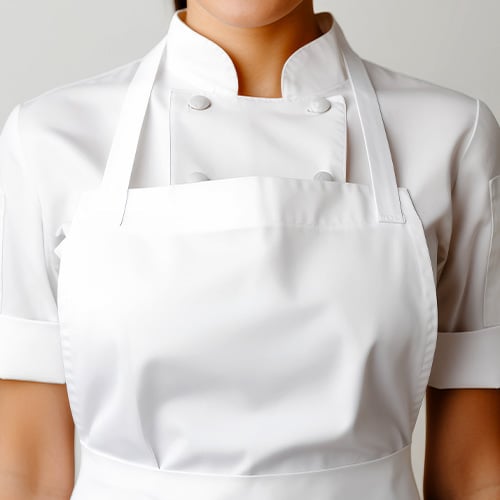
A chef’s apron serves a practical purpose in the kitchen by providing protection from spills, splatters, and heat. Chefs work in a fast-paced environment where accidents can happen, so wearing an apron helps to keep their clothing clean and free from stains. This is especially important in a professional kitchen where presentation is key.
Distinguishing features of a chef's apron include its length and coverage. Chef aprons are typically longer than regular aprons, reaching down to the knees or even lower. This extended length provides better protection for the chef's clothing and ensures that they are fully covered while working.
These are additional features you'll see on a proper chef's apron:
- Material: Chef aprons are often made from durable and stain-resistant fabrics such as cotton or polyester blends. These materials are easy to clean and can withstand the rigors of a busy kitchen environment, making them a practical choice for chefs.
- Extra Pockets: Many chef aprons come with pockets or compartments for storing essential tools and utensils. This allows chefs to have quick and easy access to items they need while cooking, helping to streamline their workflow and improve efficiency in the kitchen.
5. Gloves
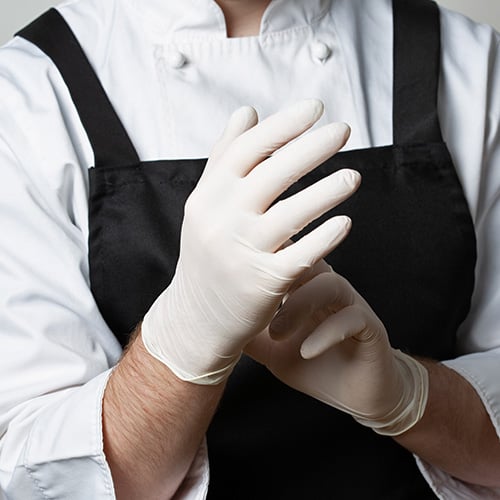
Disposable gloves are a must-have for chefs in commercial kitchens for several reasons. Firstly, they provide a hygienic barrier between the chef's hands and the food they are preparing. This is crucial in preventing cross-contamination and ensuring food safety standards are met. Whether handling raw meat, chopping vegetables, or plating dishes, disposable gloves help maintain a clean and safe cooking environment.
In addition to disposable gloves, chefs also use other types of gloves depending on the task at hand. Heat-resistant gloves are essential when working with hot surfaces, such as grills, ovens, or stovetops. These gloves protect the chef's hands from burns and allow them to handle hot cookware safely.
Cut-resistant gloves are another type of glove commonly used by chefs, especially when working with sharp knives and kitchen tools. These gloves provide an extra layer of protection against accidental cuts and injuries, allowing chefs to work efficiently and safely in the fast-paced kitchen environment.
6. Chef Pants
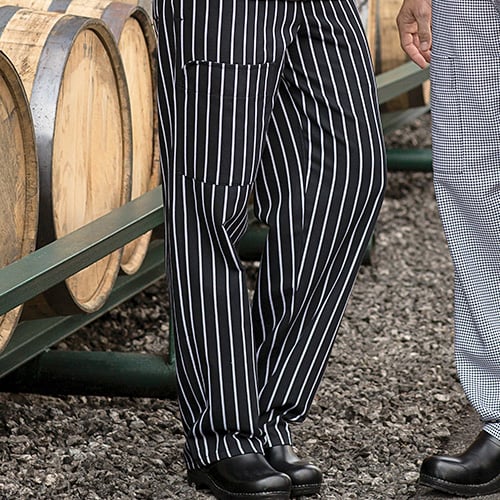
The checkered or striped pattern that's commonly seen on chef pants actually serves a practical purpose in the kitchen. These patterns can help mask stains and spills that are bound to happen during a busy shift. The design helps to camouflage any messes, keeping the chef looking clean and professional throughout the day.
The long hours spent standing and moving around in a hot kitchen can take a toll on a chef's body. Baggy pants provide ample room for movement, allowing chefs to bend, crouch, and reach without feeling restricted. Working in a kitchen involves handling sharp knives, hot liquids, and other potential hazards. A generous fit also provides an extra layer of protection against accidental spills, burns, and cuts. The loose fabric can act as a barrier between the chef's skin and any hot surfaces or splattering liquids, reducing the risk of a kitchen injury.
- Adjustable Waistbands: Many chef pants come with elastic or drawstring waistbands for a comfortable and customizable fit. This feature allows chefs to adjust the waistband as needed throughout their shift, ensuring a secure and comfortable fit at all times.
- Easy Care: In a busy kitchen environment, easy maintenance is key. Chef pants are designed to be machine washable and easy to care for, allowing chefs to keep their uniforms clean and fresh with minimal effort.
7. Footwear
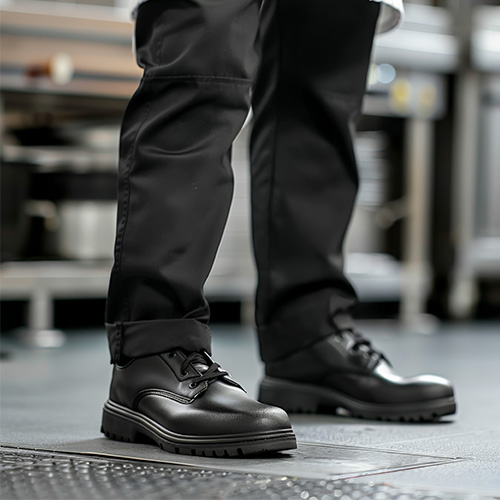
Chefs are on their feet for long hours, often in a fast-paced and high-temperature environment. Wearing the right footwear is a crucial component of a chef's uniform. Standing on hard surfaces for extended periods can take a toll on the body, leading to foot, leg, and back pain. Properly cushioned and supportive footwear can help reduce fatigue and discomfort, allowing chefs to focus on their craft without distraction.
In a bustling kitchen where sharp knives, hot surfaces, and heavy equipment are part of the daily routine, safety is paramount. Slip-resistant shoes can help prevent accidents caused by wet floors, protecting chefs from slips and falls.
Here are some other common features of restaurant footware:
- Slip-On Design: Clogs are a top choice for many chefs due to their slip-on design, which allows for quick and easy removal. They're also known for their comfort and support, with many clogs featuring cushioned insoles and arch support to help reduce foot fatigue during long hours of standing and moving around the kitchen.
- Color: The color black is known for its ability to hide stains and spills, which are inevitable when working with liquid ingredients. This means that even if a chef accidentally spills some tomato sauce on their feet, their black shoes will help conceal the mess and keep them looking professional throughout their shift.
For restaurant owners, understanding the importance of the chef's uniform is crucial for maintaining a safe and professional kitchen environment. By providing chefs with the appropriate attire, owners demonstrate their commitment to upholding hygiene standards and ensuring the safety of both staff and customers. A well-dressed chef not only looks the part but also exudes confidence and expertise, which can positively impact the overall dining experience for guests.




